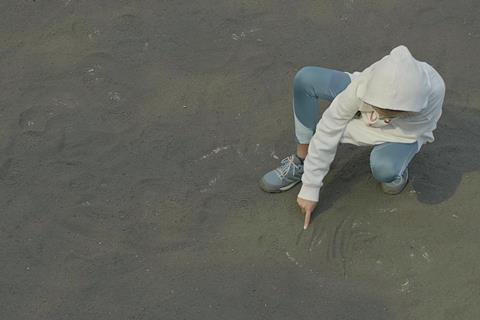Thoughtful documentary about the recent volcanic eruption on the Spanish island of La Palma

Dirs: David Pantaleon, Jose Víctor Fuentes. Spain. 2023. 66mins
A thoughtful, poetic meditation on the impact of a recent volcanic eruption in Spain’s Canary Islands, An Inhabited Volcano teems with images of fear and awe but sends forth many other emotions besides. Cleverly juxtaposing its stunning visuals with audio messages amongst a group of anxious friends as the drama unfolds, the film feels both slow burning and urgent – at once a celebration of the overpowering majesty of the volcano and a report into its horrendous human consequences. If that sounds like a lot for just over an hour of screen time, then it is: this well-intentioned piece feels unevenly paced.
The ominous, low rumble of the erupting volcano, is an ever-present soundtrack to the film just as it was to the lives of inhabitants in 2021.
The eruption of the Tajogaite volcano on La Palma in September 2021 ended up being, at 85 days, the longest on the island since records began. We are introduced to it against a black background, as the nervous voices of locals, presumably the director’s friends, wonder how it will play out: “If you’re religious,” someone says, “then say a prayer, and if you’re not, then have a beer”. The first of many compelling images then explodes onto the screen of the eruption by night, throwing out fiery red flecks into the darkness. The camera seems as transfixed by it as we are.
The focus then shifts onto the practical consequences of the eruption. There is concern about the how the lack of clear information can lead to rumours, provoking further anxiety. The news media comes in for heavy criticism of its tendency to generate scandal – as, for example, when TV pundits ask why people are still allowed to build houses on the slopes of volcanoes. But people have been doing it for millennia and, to those in the firing line, this is just adding insult to injury.
As the ash settles on the banana plantations that are so crucial to the local economy, workers struggle to brush it away and local suppliers quickly run out of leaf blowers. At times the lava wall reaches a height of ten metres, swallowing up whole houses as it advances and leaving the owners with the surreal and tricky issue of proving to insurance companies that their house even existed. (Tajogaite caused hundreds of millions of euros of damage, but only one life was lost.) Inevitably, the disaster tourists show up in their facemasks to video the unfolding disaster.
There are multiple fixed camera shots of the volcano itself, taken from different vantage points. But although the aftermath of the volcano is explored from a range of angles, its only ten minutes before the end that we see the first stunning aerial shot of the golden-red river of lava as it advances mercilessly onwards. One observer compares the volcano to the Nothing in The Neverending Story, and you can see his point.
Though things do sometimes feel rushed, some of the over-static and contemplative shots also feel overstretched – particularly through the sequences with no audio. One of a couple of horses, for example, nonchalantly munching while the inferno rages in the distance behind them, is poetic but little more. There is no score, but none is needed – from beginning to end we can hear the ominous, low rumble of the erupting volcano, an ever-present soundtrack to the film just as it was to the lives of the inhabitants of La Palma in 2021.
Production companies: Chukumi Studio
International sales: Kino Rebelde distribution@kinorebelde.com
Producers: Isabel Arencibia, Virginia Park
Screenplay: Fernando Alcantara, David Pantaleon, Jose Victor Fuentes, Isabel Arencibia
Cinematography: David Pantaleon, Jose Victor Fuentes
Editing: Fernando Alcantara























